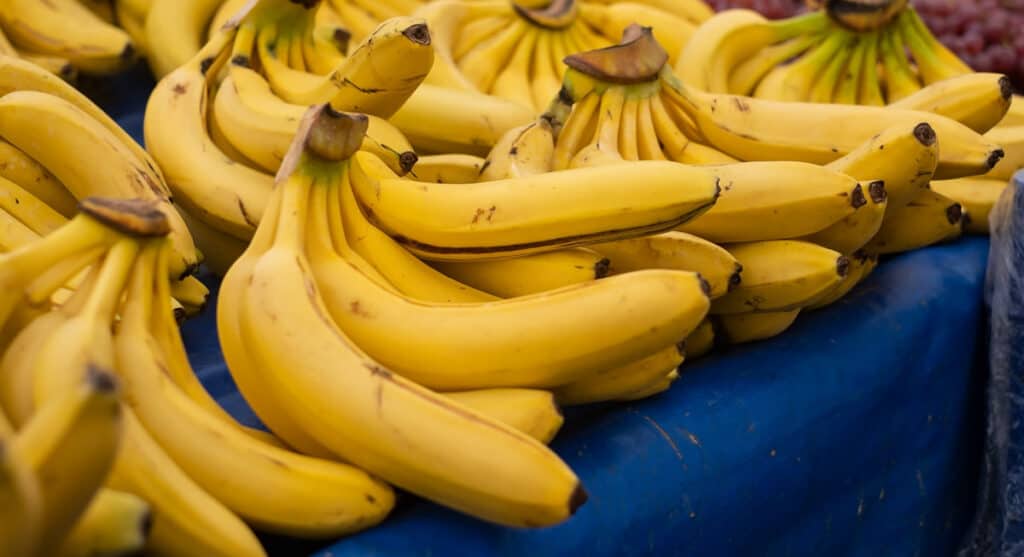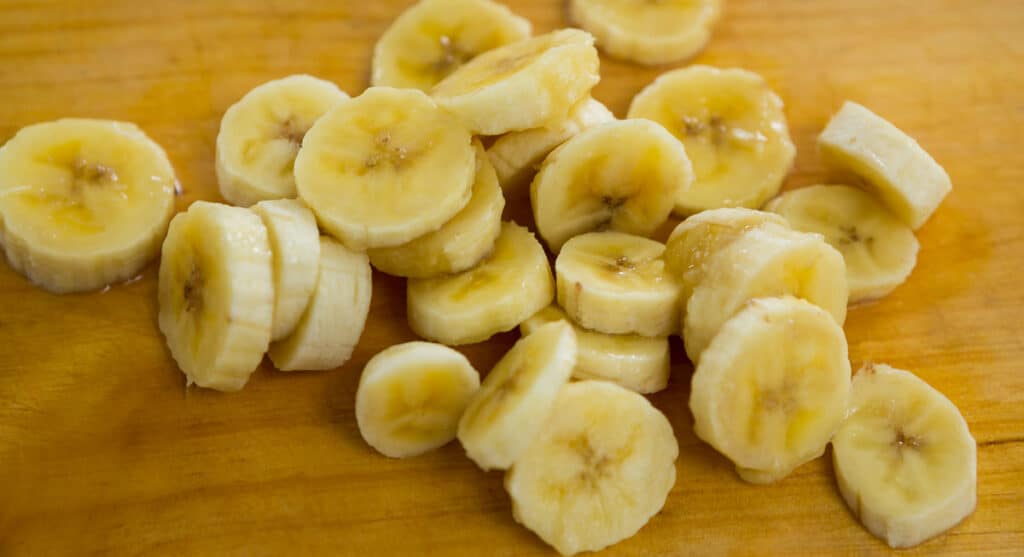Bananas have a knack for ripening at lightning speed, often leaving bananas that turn too soft or too soon. Learning how to store bananas properly can dramatically extend their shelf life and preserve their taste and nutritional value.

By managing temperature and handling carefully, you can extend the life of bananas so they stay fresh and delicious longer. It’s a simple process, but knowing the proper steps can prevent brown, gooey bananas and reduce food waste.
Top freshness factors
- Temperature: This plays a significant role in the ripening process of bananas. They ripen best at room temperature, so keeping them away from extreme cold or heat is essential. Cold temperatures slow down the ripening, while heat accelerates it.
- Light exposure: Keep bananas away from direct sunlight. Indirect or artificial light will prevent premature ripening and the development of brown spots.
- Ethylene gas: Bananas release ethylene gas, which promotes ripening in fruits. Good airflow prevents the buildup of ethylene gas, which can lead to overripening.
- Careful handling: Bananas that are bruised or physically damaged spoil more quickly.
Initial preparation
Proper initial storage preparation of bananas helps them remain fresh for longer. Follow these steps when you get home from the grocery store or market.
Unwrap your bananas if they come in plastic wrap, or remove any stickers. This allows the bananas to breathe and reduces moisture buildup, which leads to faster decay.
Filled with appetizers, salads, sides, mains and desserts, Food Drink Life's cookbook will become your favorite!
- Easy and delicious recipes from a variety of top chefs and recipe developers.
- Bright, colorful pictures on every page.
- Printer-friendly recipes that you can download instantly to your device.
- Printable shopping list and a kitchen conversion sheet.
How to store bananas
Room temperature storage is crucial to maintain the freshness of bananas. It can significantly extend their shelf life and keep them tasting their best.

How to store bananas on the countertop
Place bananas on your countertop, away from direct sunlight, heat sources and other fruit. Make sure there is good air circulation to prevent moisture buildup.
A fruit bowl is one of the worst places to store bananas since many other fruits, like apples and peaches, also release ethylene gas. Keeping bananas away from other fruit prevents a chain reaction of over-ripening.
Some people hang bananas on a specialized banana hanger, which reduces pressure points, minimizes bruising and ensures good airflow. Separating the bananas from the bunch also helps improve the airflow.
Bananas kept at room temperature will continue to ripen. So once they have reached peak ripeness, placing them in a refrigerator or freezer preserves their freshness.
“I separate a bunch of bananas and store them in a bowl on the counter. Once I started doing this, the bananas stayed fresh longer than being kept in a bunch.”
— Jere’ Cassidy, One Hot Oven
Wrapping the stems
Wrapping the stems of bananas in plastic wrap effectively slows down the room-temperature ripening process. The stems release the ethylene gas, so covering them traps the gas.
This simple technique can keep room-temperature bananas firm and yellow for longer. Just a small piece of plastic wrap can make all the difference in extending bananas’ shelf life.
How to store bananas in the refrigerator
Placing bananas in the refrigerator extends their shelf life once they’ve reached the desired level of ripeness. The cold temperature slows down the production of ethylene gas.
Although the skin may darken, the fruit inside remains firm and unchanged. Again, keep the refrigerated bananas away from other fruit to prevent further ripening. Refrigerated bananas will last for five to seven days.

How to store bananas in the freezer
Freezing bananas is a straightforward process that preserves their sweetness and nutritional value. It’s an excellent way to extend their shelf life for smoothies, baking banana bread or as a chilled snack. Frozen bananas keep well for about three months.
Freezing whole bananas
Before freezing whole bananas, remove the peel. The peel becomes dark and very difficult to remove once frozen.
After peeling the bananas, place them in a single layer on a baking sheet lined with parchment paper and freeze them until they are solid. Then, transfer the bananas to a freezer-safe bag, removing as much air as possible before sealing to prevent freezer burn.
Freezing sliced bananas
Banana slices can also be frozen. First, peel the bananas and then cut them into half-inch slices.
Arrange the slices in a single layer on a baking sheet lined with parchment paper. Freeze the slices until they are solid, then transfer them to a freezer-safe container or bag. Remove as much air as possible when sealing to keep the sliced bananas fresh.
“While it’s always my intention to save bananas to make my favorite banana bread, the truth is I often leave them out too long. Instead of wasting them, I’ve started freezing bananas, so I always have them ready for smoothies and baking recipes.”
— Susannah Brinkley Henry, Feast + West

Banana ripeness stages
Recognizing the right time to move bananas from the counter to a freezer or refrigerator can be the difference between enjoying the fruit and throwing it out.
- Green: These bananas are not yet ripe, which is perfect if you don’t plan to eat them right away.
- Yellow with green tips: These are best for eating within a few days.
- Bright yellow: The yellow indicates fully ripe bananas that are ready to eat right now.
- Yellow with brown spots: This is when bananas have reached their highest sweetness, so eat them soon.
- Brown: This indicates overripe bananas suitable for baking banana bread or muffins.
Summing up
Learning how to store bananas properly is essential for anyone looking to enjoy this versatile fruit at its best for as long as possible. Each method offers its benefits, from the countertop to the freezer, whether you’re aiming to savor them a little longer or speed up their ripeness for a recipe. Keep your bananas in peak condition to reduce waste and ensure a delicious, healthy snack is always within reach.
Anne Jolly is the creator of the food blog Upstate Ramblings. She loves to cook with gadgets like an air fryer, sous vide or pressure cooker. In her free time, she enjoys hiking, reading, knitting and spending time with her three kids.
